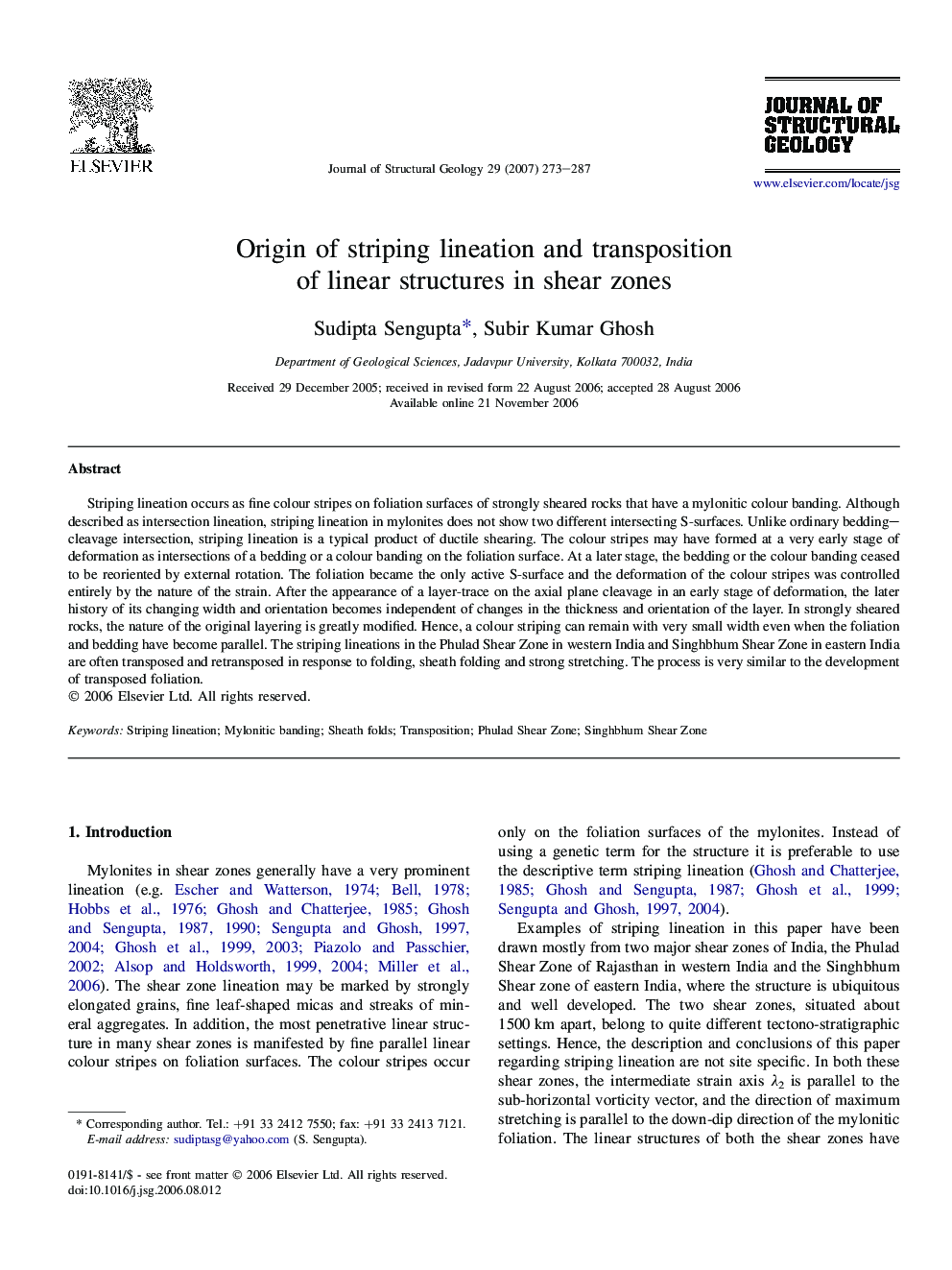| Article ID | Journal | Published Year | Pages | File Type |
|---|---|---|---|---|
| 4734226 | Journal of Structural Geology | 2007 | 15 Pages |
Abstract
Striping lineation occurs as fine colour stripes on foliation surfaces of strongly sheared rocks that have a mylonitic colour banding. Although described as intersection lineation, striping lineation in mylonites does not show two different intersecting S-surfaces. Unlike ordinary bedding-cleavage intersection, striping lineation is a typical product of ductile shearing. The colour stripes may have formed at a very early stage of deformation as intersections of a bedding or a colour banding on the foliation surface. At a later stage, the bedding or the colour banding ceased to be reoriented by external rotation. The foliation became the only active S-surface and the deformation of the colour stripes was controlled entirely by the nature of the strain. After the appearance of a layer-trace on the axial plane cleavage in an early stage of deformation, the later history of its changing width and orientation becomes independent of changes in the thickness and orientation of the layer. In strongly sheared rocks, the nature of the original layering is greatly modified. Hence, a colour striping can remain with very small width even when the foliation and bedding have become parallel. The striping lineations in the Phulad Shear Zone in western India and Singhbhum Shear Zone in eastern India are often transposed and retransposed in response to folding, sheath folding and strong stretching. The process is very similar to the development of transposed foliation.
Keywords
Related Topics
Physical Sciences and Engineering
Earth and Planetary Sciences
Geology
Authors
Sudipta Sengupta, Subir Kumar Ghosh,
